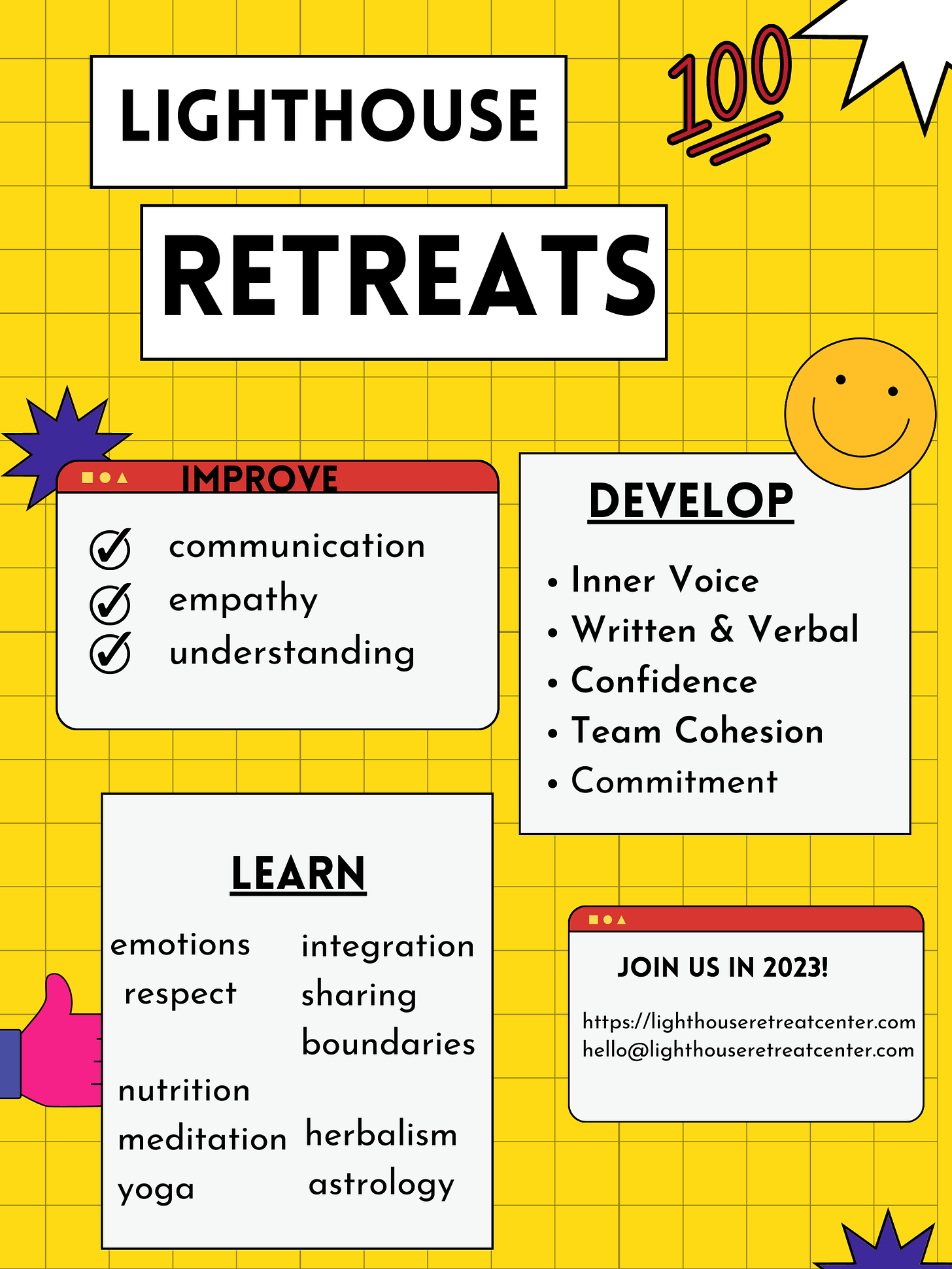How will companies overcome the hurdles of WFH without alienating employees nor sacrificing efficiency?
At the Lighthouse Retreat Center, this question is on our minds. And if you’re in a leadership position, it should be on yours, too!
In just 2.5 years, American work culture shifted from regional, in-person teams to world-wide, work-from-home. In the startup community, I hear this referred to as remote-first and it has quite a few benefits, including:
- Diverse and competitive talent pool
- Employee compensation based on location
- Reduced overhead costs associated with offices and leasing
But like any change, we’re really just exchanging one set of problems for another. In this case, companies embracing WFH are now faced with:
- Lack of team cohesion and stickyness, resulting in low degree of loyalty
- Increased friction between team-member due to reduced interaction
- Difficulty measuring individual contribution and effectiveness
So, how do companies overcome the hurdles of WFH without alienating employees with tracking initiatives and without sacrificing cost or efficiency?
What’s Underneath the Hood?
There’s good news here. The core issues at hand are nothing new and we can use existing practices to renew our relationship with work. At it’s core, the downsides of remote-first revolve around:
- Trust
- Communication
- Loyalty and Relationships
These concepts form a web between individual, teammate, and company. Optimal efficiency and productivity arise when each of those ties are solid.

Why Retreats are the Answer
Real quick, let’s baseline our intended outcome. What we want to achieve is increased employee loyalty to the company and mission, improved working efficiency amongst teams and teammates, and reach a level of comfort with reduced visibility into employees work schedule (aka reframing the connection between input to outcome).
We have to align on something first – we cannot remotely overcome the downsides of remote-first. Google’s Video Booth will be a neat addition to the tools available towards this end, but we’ve been unable to reach the same outcome via a remote pathway. If we agree on that, then our solutions are narrowed to in-person and the task becomes finding the optimal ratio of frequency and duration against cost.
Here’s what you have to consider
- Break from Business Objectives to Focus on Team
- How long can the team’s be away from their duties?
- Can everyone be absent at once?
- What is the cost to the business?
- When is the best time to be AFK?
- What is the extent of company responsibility?
- Do we cover 100% of costs?
- Do we invite family members?
- What is the monetary cost?
- Where do we even begin planning this?
- Location, Needs, Activities, Emergencies
Here’s What Makes a Retreat a Success
- Clear improvement in team cohesion (ability to communicate and work together)
- Improved retention and personal loyalty to our company’s mission
- Leadership’s ability to trust staff work schedules without much oversight and staff appreciation for what this takes.
How to Get From Current State → Future State
If the success outcomes above are your goals, what remains are two important decisions at the top of the tree.
- Where will it be located?
- What degree of planning will be internal? (build / buy)
First, think of two or three hubs where it makes sense to host the retreat. This will help narrow the cost, dates, and available retreat centers. Then, decide how much of the retreat should be handled in-house.
If you take it all on yourself, the work involved in planning a retreat is always underestimated. It can be treated like building a new office, add 10-15% to your time/scheduling, costs, and overall effort to make it happen. Easy.
If you split the work, there are some companies will act in a travel agent capacity – helping you plan and guiding you through the process. This will come at a premium and you should expect to pay them for the opportunity. And since each component is an ‘add-on’, the experience will lack a degree of cohesiveness and flow that comes from a fully operated retreat. Consider a vacation to Six Flags vs. Disney World. In one, you’re finding the hotel, the car/transport, the activities, the meals all separately while in the other, you just need to show up.
If you want the Disney World experience without the cost, go with an all-inclusive retreat designed for startups and small teams. When you find one that works for you, the extent of the work is picking a date and considering travel needs. The downside to this approach is that much of the retreat will be out of your hands, so it’s paramount that you find an all-inclusive that is focused on your company’s demographic and success outcomes.
The Lighthouse Retreat Center
At the Lighthouse, we’ve built a 4 day, all-inclusive immersive retreat experience for teams of 6-12 outside New York City. Our retreat is designed around an idea that a remote-first approach can be balanced with in-person relationship development.
To make it work, we’ve combined team-building activities such as hiking and camping with learning and development through workshops taught by skilled instructors with varying modalities. We tie it all together through a common theme and have everything you need on-site. Just bring yourself (…and maybe a change of clothes).
Our goal is crystal clear – we build conscious teams. Conscious of our commitment to personal growth, team members, and commitment to the mission. Shoot us a note to talk about your retreat needs in 2023!
